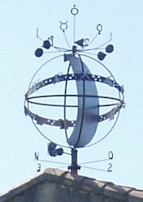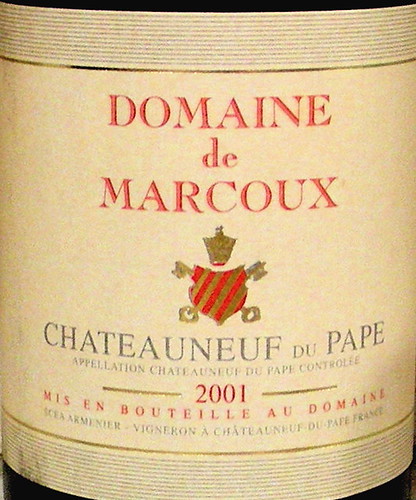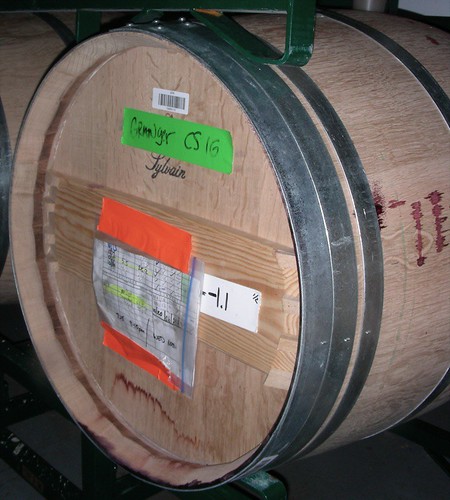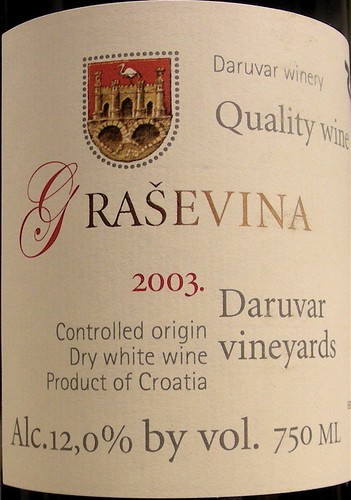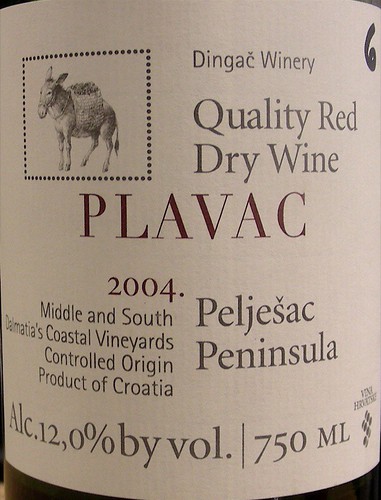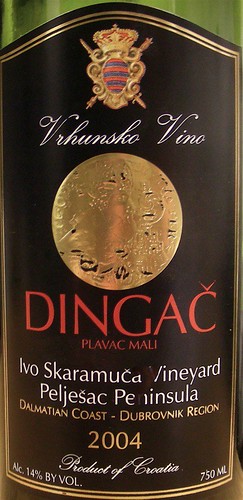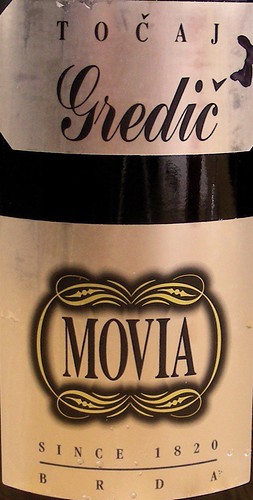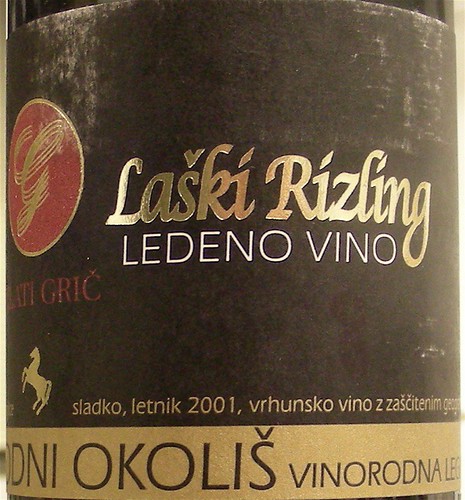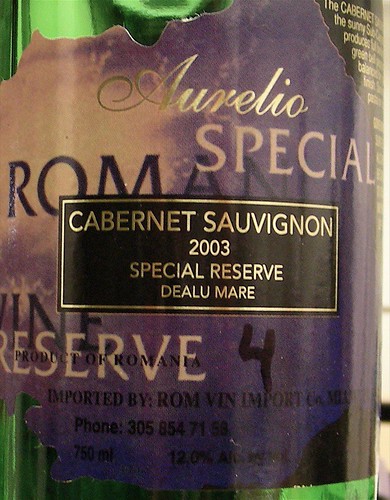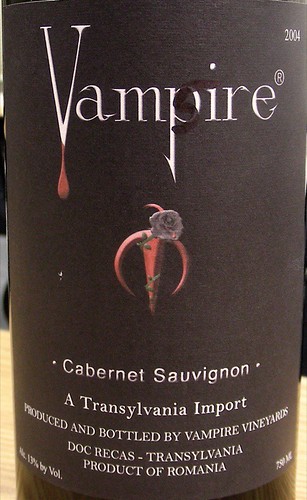In our last wine club event that occurred last month just before the holidays, we tasted and compared 8 different Champagnes. Some were blends of several vineyards, varietals, and vintages, and some were made from a single cru, a single varietal, or a single vintage. Many of them were from small grower producers that farm their own vineyard and vinify their own Champagne, and direct-imported from K&L Wine Merchants.
As we were tasting them, it became obvious that they all had different characters and unique personalities. Some tasters enjoyed the elegance and finesse of Blanc de Blancs Champagnes, made with Chardonnay only, while others preferred the distinctive character of Premier or Grand Cru Champagnes.
We tasted the following wines:
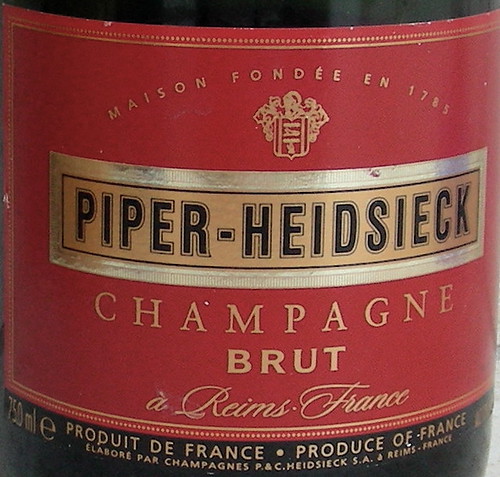 • Champagne Piper-Heidsieck Brut: when Florens-Louis Heidsieck, the son of a Lutheran minister from Westphalia, discovered winemaking in Reims in 1780, he decided to found his own Champagne House. After his death, his nephew Christian Heidsieck and his cousin Henri Guillaume Piper took over the business, which quickly became known as the Piper-Heidsieck Champagne house. Ideal for cocktails, parties, and informal dinners, the cuvée Brut is a blend of 50 different growths of Pinot Noir and Pinot Meunier. The wine had a lively effervescence. The nose was a bit shy. On the palate, the wine had a sweet, fruity, yeasty taste.
• Champagne Piper-Heidsieck Brut: when Florens-Louis Heidsieck, the son of a Lutheran minister from Westphalia, discovered winemaking in Reims in 1780, he decided to found his own Champagne House. After his death, his nephew Christian Heidsieck and his cousin Henri Guillaume Piper took over the business, which quickly became known as the Piper-Heidsieck Champagne house. Ideal for cocktails, parties, and informal dinners, the cuvée Brut is a blend of 50 different growths of Pinot Noir and Pinot Meunier. The wine had a lively effervescence. The nose was a bit shy. On the palate, the wine had a sweet, fruity, yeasty taste.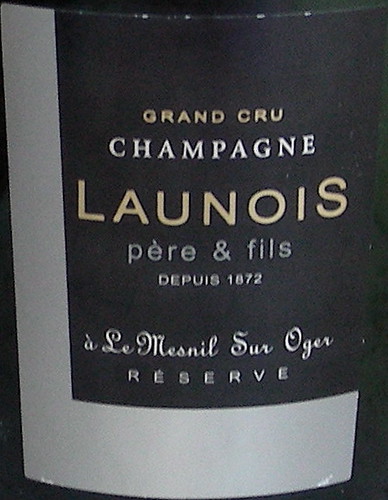 • Champagne Launois Père & Fils Blanc de Blancs Brut Cuvée Réservée: founded in 1872 by the Launois family, the Launois Père & Fils house is located at the heart of the prestigious Côte des Blancs, an east-facing hill south of Epernay, producing Champagne's finest Chardonnays. The Cuvée Réservée is 100% Chardonnay sourced from Grand Cru vineyards. The wine was much drier than the Piper-Heidsieck, with finer bubbles, apple and pear aromas, and a crisp acidity on the palate, maybe too acidic for some tasters.
• Champagne Launois Père & Fils Blanc de Blancs Brut Cuvée Réservée: founded in 1872 by the Launois family, the Launois Père & Fils house is located at the heart of the prestigious Côte des Blancs, an east-facing hill south of Epernay, producing Champagne's finest Chardonnays. The Cuvée Réservée is 100% Chardonnay sourced from Grand Cru vineyards. The wine was much drier than the Piper-Heidsieck, with finer bubbles, apple and pear aromas, and a crisp acidity on the palate, maybe too acidic for some tasters. • 1999 Champagne Roederer Blanc de Blancs Brut: Champagne Roederer is one of the largest remaining independent champagne houses owned by the same family since its foundation, in 1776 by Louis Roederer. His son, also named Louis, was made official supplier to the Imperial Court of Russia by Tsar Nicholas II. The finest crus from the estate vineyard in the Côte des Blancs are selected for the Blanc de Blancs Vintage cuvée, which is only produced in small quantities. The wine had a nice creamy texture and less acidity than the Launois. It had a lot of elegance and balance, and quickly became a favorite for many tasters.
• 1999 Champagne Roederer Blanc de Blancs Brut: Champagne Roederer is one of the largest remaining independent champagne houses owned by the same family since its foundation, in 1776 by Louis Roederer. His son, also named Louis, was made official supplier to the Imperial Court of Russia by Tsar Nicholas II. The finest crus from the estate vineyard in the Côte des Blancs are selected for the Blanc de Blancs Vintage cuvée, which is only produced in small quantities. The wine had a nice creamy texture and less acidity than the Launois. It had a lot of elegance and balance, and quickly became a favorite for many tasters.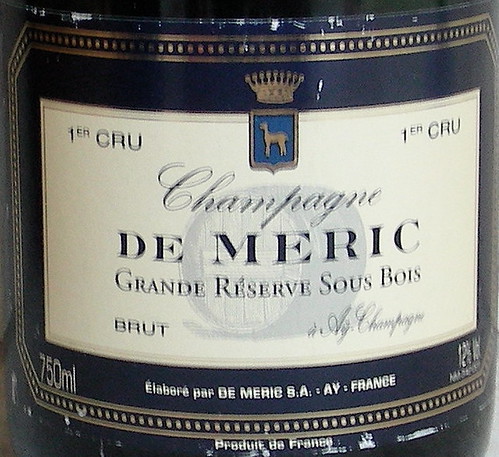 • Champagne De Meric Grande Réserve Sous Bois Brut: founded in 1843 by the Besserat family, Champagne De Meric continues to follow traditional vinification processes. It uses the traditional 4000-kilo vertical press and vinifies and ages 50% of its cuvées in oak barrels, Then, the wine is aged in deep chalk cellars, where each bottle is manually rotated every day (remuage). The Grande Réserve Sous Bois is a blend of 80% Pinot Noir, 15% Chardonnay, and 5% Pinot Meunier from Grand Cru and Premier Cru vineyards. It was less acidic than the two Blanc de Blancs, with a vinous character, rich Pinot flavors and a firm backbone. Definitely one of my favorite Champagne.
• Champagne De Meric Grande Réserve Sous Bois Brut: founded in 1843 by the Besserat family, Champagne De Meric continues to follow traditional vinification processes. It uses the traditional 4000-kilo vertical press and vinifies and ages 50% of its cuvées in oak barrels, Then, the wine is aged in deep chalk cellars, where each bottle is manually rotated every day (remuage). The Grande Réserve Sous Bois is a blend of 80% Pinot Noir, 15% Chardonnay, and 5% Pinot Meunier from Grand Cru and Premier Cru vineyards. It was less acidic than the two Blanc de Blancs, with a vinous character, rich Pinot flavors and a firm backbone. Definitely one of my favorite Champagne. • Champagne Marguet Père & Fils Grand Cru Brut Réserve: Champagne Marguet Père & Fils is located in the grand cru village of Ambonnay, on the Montagne de Reims, one of the best areas in Champagne to grow Pinot Noir. The Grand Cru Brut Réserve is a blend of 60% Pinot Noir and 40% Chardonnay from the Grand Crus Ambonnay, Bouzy and Mailly. We found that the wine had many similarities with the De Meric. It was dry, fruity, rich in flavors, with a round finish.
• Champagne Marguet Père & Fils Grand Cru Brut Réserve: Champagne Marguet Père & Fils is located in the grand cru village of Ambonnay, on the Montagne de Reims, one of the best areas in Champagne to grow Pinot Noir. The Grand Cru Brut Réserve is a blend of 60% Pinot Noir and 40% Chardonnay from the Grand Crus Ambonnay, Bouzy and Mailly. We found that the wine had many similarities with the De Meric. It was dry, fruity, rich in flavors, with a round finish. • Champagne Perrier Jouët Grand Brut: the Perrier Jouët house was established in 1811 by Pierre-Nicolas-Marie Perrier who decided to add his wife's maiden name, Jouët, to the name of the house. His son Charles introduced the concept of Vintage Champagne and build up the reputation of the family business. It is now one of the major Champagne brands. The cuvée Grand Brut is 40% Pinot Noir, 40% Pinor Meunier, and 20% Chardonnay. it had subtle creamy and nutty flavors but seemed less distinctive than the De Meric and Marguet.
• Champagne Perrier Jouët Grand Brut: the Perrier Jouët house was established in 1811 by Pierre-Nicolas-Marie Perrier who decided to add his wife's maiden name, Jouët, to the name of the house. His son Charles introduced the concept of Vintage Champagne and build up the reputation of the family business. It is now one of the major Champagne brands. The cuvée Grand Brut is 40% Pinot Noir, 40% Pinor Meunier, and 20% Chardonnay. it had subtle creamy and nutty flavors but seemed less distinctive than the De Meric and Marguet. • Champagne Tarlant Brut Prestige Cuvée Louis: the Champagne Tarlant house was founded in 1687 by the Tarlant Family. The Cuvée Louis is named after Louis Tarlant, born in 1878 and instrumental in specifying the Champagne appellation in 1927. It is a 50% Chardonnay, 50% Pinot Noir blend, vinified and aged in oak barrels with no malolactic fermentation. The fruit comes from the vineyard Les Crayons named for its chalky soil. The wine was distinctive and elegant, dry and crisp with a fresh nose of green apple and toasted aromas, and a slightly bitter finish.
• Champagne Tarlant Brut Prestige Cuvée Louis: the Champagne Tarlant house was founded in 1687 by the Tarlant Family. The Cuvée Louis is named after Louis Tarlant, born in 1878 and instrumental in specifying the Champagne appellation in 1927. It is a 50% Chardonnay, 50% Pinot Noir blend, vinified and aged in oak barrels with no malolactic fermentation. The fruit comes from the vineyard Les Crayons named for its chalky soil. The wine was distinctive and elegant, dry and crisp with a fresh nose of green apple and toasted aromas, and a slightly bitter finish.  • 1987 Champagne Leclerc Briant Rubis de Noirs Brut: Champagne Leclerc Briant is a 30 hectares estate that now follows biodynamic farming practices. The Rubis de Noir cuvée is not a blend of red and white wine like most Champagne Rosé (Champagne is the only French appellation allowed to make rosé by blending a red and a white wine), but it is a 100% Pinot Noir vinified as a rosé de saignée where the red grapes are fermented with their skins for a short amount of time. The wine had a wonderful copper color with a nose of cherry liqueur. On the palate, it was yeasty and smoky with an intriguing port-like finish. Truly amazing for such an old Champagne!
• 1987 Champagne Leclerc Briant Rubis de Noirs Brut: Champagne Leclerc Briant is a 30 hectares estate that now follows biodynamic farming practices. The Rubis de Noir cuvée is not a blend of red and white wine like most Champagne Rosé (Champagne is the only French appellation allowed to make rosé by blending a red and a white wine), but it is a 100% Pinot Noir vinified as a rosé de saignée where the red grapes are fermented with their skins for a short amount of time. The wine had a wonderful copper color with a nose of cherry liqueur. On the palate, it was yeasty and smoky with an intriguing port-like finish. Truly amazing for such an old Champagne!Next time, we will be tasting a selection of wines from Piedmont so stay tuned!
Other wine club tastings:
• From Old World To New World
• Champagne tasting 2005
Technorati tags: wine food & drink
